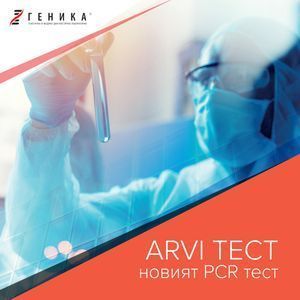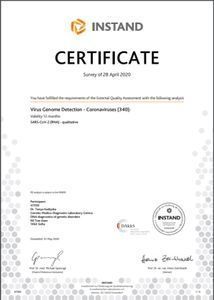Childhood Obesity
Overweight and related problems are becoming increasingly important in clinical practice worldwide. Overweight and obese patients show an increased risk of developing one or more serious diseases such as hypertension, dyslipidemia, cardiovascular disease, and diabetes. The genetic panel for predisposition to overweight and obesity in early childhood is based on individual genetic differences in fat and carbohydrate metabolism, fat absorption, regulation of insulin and leptin, and regulation of appetite. The analysis involves study of genetic variations, marked as the most important in the genetic map of this pathology in childhood.
We also offer screening for mutations in syndromic and non-syndromic obesity in early childhood. Mutations in certain genes are associated with this disorder and cause extreme hunger and increased appetite (hyperphagia).
Diagnostic Range: FTO, APOA2, FABP2, ADRB2, MC4R, SH2B1
Diagnostic Method: Sanger sequencing
Research Material: 3-6 ml venous blood / 2 ml peripheral blood
Results within: 10 business days
Fee: BGN 300 / BGN 800
Clinical application
Childhood obesity; Eating disorders; Metabolic disorders
Metabolism and Development
Genetic panel Metabolism and development provides an individual approach in children with neurological symptoms, autism, developmental problems, metabolic diseases and more. The panel includes analysis of variants located in genes of important metabolic pathways associated with changes in neurotransmitter and methylation cycles, with a predisposition to vitamin, mineral and choline deficiencies, with improper detoxification, and with a risk of histamine intolerance. The panel provides a systematic approach and supports the course of treatment in order to improve the quality of life.
Diagnostic Range: Brain and intestinal neuromediation - metabolism of dopamine and serotonin; Proper methylation; Vitamins - proper absorption of vitamins B6, B9 (folic acid); B12 and vitamin D; Detoxification; Choline deficiency; Histamine intolerance
Diagnostic Method: Sanger sequencing/ RFLP
Research Material: 3-6 ml venous blood / 2 ml peripheral blood
Results within: 10 business days
Fee: BGN 1,000
Clinical application
Autism; Generalized developmental disorders with unknown cause; Metabolic disorders; Eating disorders
Respiratory Infections
In the last few years, with the development of new analyzes and the availability of updated tests for newer strains of pathogens, the diagnosis of respiratory infections has significantly developed. Newer laboratory methods are fast, highly sensitive and specific, and are gradually replacing conventional gold standards. Nucleic acid amplification tests (PCR) for respiratory viruses are already used to detect both conventional and emerging viruses. These tests are more sensitive than other diagnostic approaches, with the PCR method forming the backbone of clinical virological laboratory tests. It allows up to 21 different viruses to be detected in one test, distinguishing between emerging viruses, such as SARS-CoV-2 (COVID-19), influenza and cold. To see our tests please click HERE
Diagnostic Range: Acute respiratory viral and bacterial infections
Diagnostic Method: PCR assay
Research Material: Nasopharyngeal specimen; Oropharyngeal specimen; Sputum; Bronchoalveolar lavage
Results within: 1 business day
Fee: From BGN 70 to BGN 190, depending on the test selected
Clinical application
COVID-19; Influenza A and Influenza B; Non-influenza acute viral respiratory infections,; Bacterial respiratory infections
Download Our Brochure
Download Our Brochure
Allergies
Allergy tests are used to detect if the blood contains antibodies to a particular substance, such as peanuts or pollen, for example. These antibodies are called immunoglobulin E or IgE antibodies. If a person's blood contains IgE antibodies, specific to a particular substance, it means that he/she is allergic to that substance. These antibodies cause rashes, itching, sneezing and other symptoms. To see the different allergy tests, please click HERE.
Diagnostic Range: From 20 to 282 allergens
Diagnostic Method: Enzyme Allergo-Sorbent Testing
Research Material: 1-4 ml venous / capillary blood in a serum tube
Results within: 5-7 business days
Fee: BGN 110 - BGN 340, depending on the number of allergens tested
Clinical application
Urticaria; Eczema; Anaphylaxis; Asthma; Allergic rhinitis; Atopic dermatitis.
Food intolerances
Unlike classic allergies, where IgE antibodies are formed for rapid allergy, food intolerances produce IgG antibodies, that cause a delayed type of reaction. The condition is also called "food hypersensitivity". When that happens, specific IgG antibodies are formed, and they accept certain dietary proteins as foreign antigens. The result is a delayed immune response - within a few days.
To see the tests types we offer, please click HERE
Diagnostic Range: From 24 to 216 food intolerances
Diagnostic Method: Enzyme Allergo-Sorbent Testing
Research Material: 1-4 ml venous / capillary blood in a serum tube
Results within: 3-5 business days
Fee: From BGN 190 to BGN 690
Clinical application
Urticaria; Dermatitis; Acne; Itching; Asthma; Persistent cough; Constant hunger; Swelling of the abdomen; Intestinal rumbling; Constipation or diarrhea; Headache; Migraine; Sleep disorders; Fatigue.
Muscular Dystrophy, Duchenne Type (DMD) or Muscular Dystrophy, Becker Type (BMD)
Duchenne / Becker muscular dystrophy is an X-linked inherited neuromuscular disease that occurs primarily in boys. Muscular dystrophy, type Duchenne (DMD) is characterized by progressive degeneration and muscle weakness, usually beginning after the age of 3 years. The average life expectancy is 17 years.
The muscular dystrophy, Becker type (BMD) is similar to DMD but has a later onset (during puberty or thereafter) and a milder clinical presentation. DMD / BMD are caused by mutations in the largest human gene - DMD, which is responsible for the production of the protein dystrophin. Most commonly, mutations are of the deletion type and involve one or more of the 79 coding exons of the gene. In much fewer cases, point mutations are detected.
There is still no effective treatment, and the therapy is mainly symptomatic. The risk of giving birth to a boy with muscular dystrophy types Duchenne / Becker muscular dystrophy in a family in which the partner is a carrier is 50%. The only prevention is to perform a prenatal diagnosis.
Diagnostic Range: DMD (Dystrophin)
Diagnostic Method: MLPA to search for deletions of exons of the DMD gene; Sanger sequencing to search for point mutations and small deletions in the DMD gene
Research Material: Venous or capillary blood with K2EDTA (purple tube)
Results within: 10 business days
Fee: BGN 800 - MLPA; BGN 3,200 - Sanger sequencing of the entire DMD gene
Clinical application
Confirmation of the clinical diagnosis; Carrier testing for females - maternal lineage relatives
Spinal Muscular Atrophy (SMA)
Spinal muscular atrophy is an inherited condition due to a lack (so-called deletion) of a specific part of both copies of the SMN1 gene. Degeneration of motor neurons, muscle weakness and progressive disability are observed. There are several forms. Type 1 affects children in early childhood, and the outcome is lethal before their first year. Other types of SMA lead to severe disability and an unfavorable outcome at a later stage in the patient's life.
Treatment of SMA is symptomatic and includes mainly rehabilitation and special care by the parents of young patients. The new generation of gene therapy, recently introduced in Bulgaria, gives great hope to the affected families. Prior to its application the genetic analysis is mandatory to determine the number of copies of the SMN2 gene.
Official data on the frequency of SMA carriers in Bulgaria is not available, but according to published data it is 1/45 for Caucasians. Statistically, this is more than 150,000 people in the country.
The risk of giving birth to a child affected by spinal muscular atrophy in a family in which both partners are carriers is 25%.
Prevention includes carrier tests for relatives of the families with a child born with SMA, as well as prenatal diagnosis in the early months of pregnancy in affected families.
Diagnostic Range: SMN1 / SMN2
Diagnostic Method: MLPA for searching deletions of exons 7 and 8 of the SMN1 gene and determining the SMN2 gene copy numbers
Research Material: Venous blood with K2EDTA (purple tube)
Results within: 10 business days
Fee: BGN 800
Clinical application
Confirmation of clinical diagnosis; Carrier testing in unaffected family members; Determining of SMN2 gene copy numbers in patients with SMA in relation to the application of gene therapy
Mucoviscidosis / Cystic Fibrosis
Mucoviscidosis / Cystic fibrosis is an inherited, incurable disease with a high incidence among Caucasians. It is due to mutations in the CFTR gene, which leads to disruption of chloride channels on the secretory glands. As a result, excessively thick and sticky mucus is retained and accumulated, that is a favorable environment for the development of pathogenic microorganisms and for frequent infections. Many systems and organs are affected - most often the lungs and the digestive system.
Symptoms may occur before birth (with ultrasound evidence of hyperechogenic intestinal loops in the fetus), after birth (the most common indication is meconium ileus), or in early childhood (with frequent severe lung infections and slow weight gain). The treatment is supportive, and the hope in some cases is in a lung transplant. The average life expectancy of the affected patients is between 12 and 30 years.
The frequency of mutations in the CFTR gene among the Bulgarian population is estimated at 1 in 30 (or about 200,000 persons in the country), and every year an average of 20 children are born affected by this incurable disease.
The risk of giving birth to a child affected by cystic fibrosis in a family with both partners carriers is 25%. The only prevention is search for carriers and prenatal diagnostics.
Diagnostic Range: CFTR
Diagnostic Method: Sanger sequencing to search for point mutations and small deletions in the CFTR gene; MLPA to search for deletions of exons of the CFTR gene
Research Material: Venous blood with K2EDTA (purple tube)
Results within: 10 business days
Fee: BGN 600 - Sanger sequencing to search for the most common CFTR mutations in Bulgaria; BGN 2,600 - Sanger sequencing of the entire CFTR gene; BGN 800 - MLPA
Clinical application
Confirmation of the clinical diagnosis; Carrier testing in unaffected family members
Next-Generation sequencing (NGS)/ Whole Exome Sequencing (WES)
This test detects mutations in 20,000 genes associated with various hereditary conditions. It analyzes packages of target genes associated with specific conditions according to clinical diagnosis (Cancer Panel, Pediatric Panel, Diabetes Panel, Epilepsy Panel, Intellectual Deficiency/Autism Panel, Skeletal Dysplasias Panel, Cardiomyopathies Panel, etc.).
Diagnostic Range: ~20 000 genes
Diagnostic Method: Next-Generation Sequencing
Research Material: Venous blood
Results within: 2 to 4 months
Fee: BGN 3800
Clinical application
Cancer, childhood diseases, diabetes, epilepsy, intellectual deficit/autism, skeletal dysplasia, cardiomyopathies, etc.


